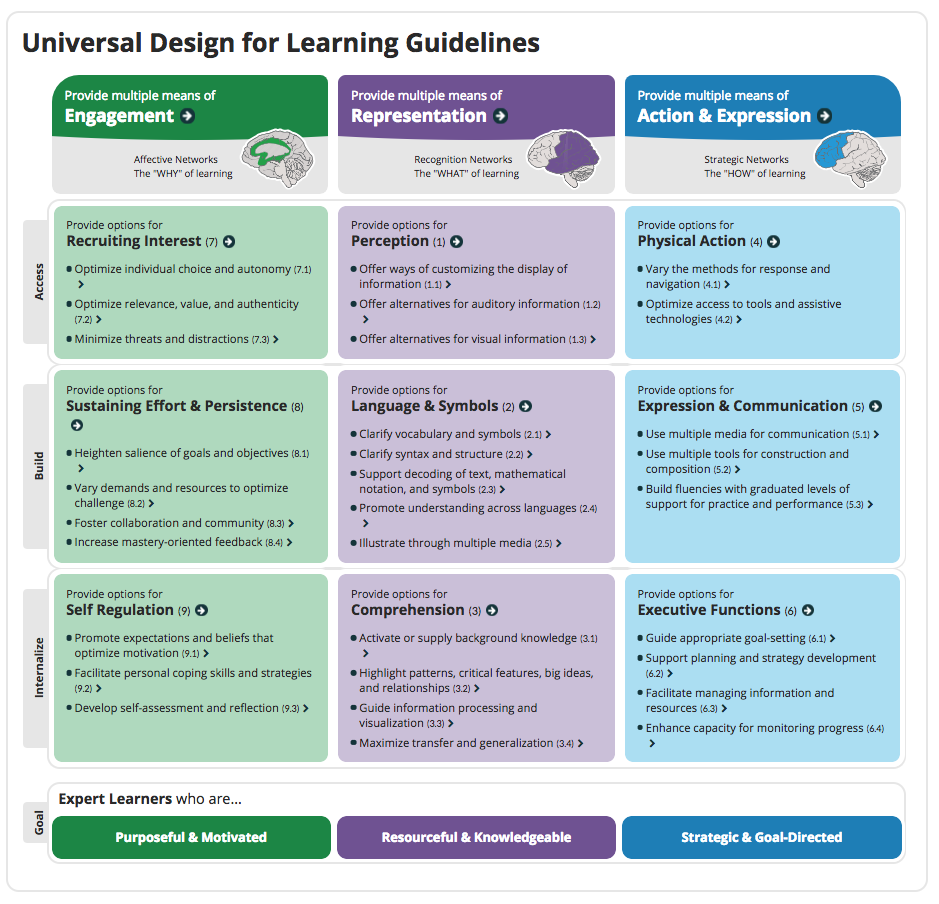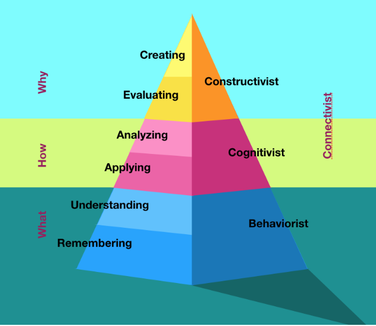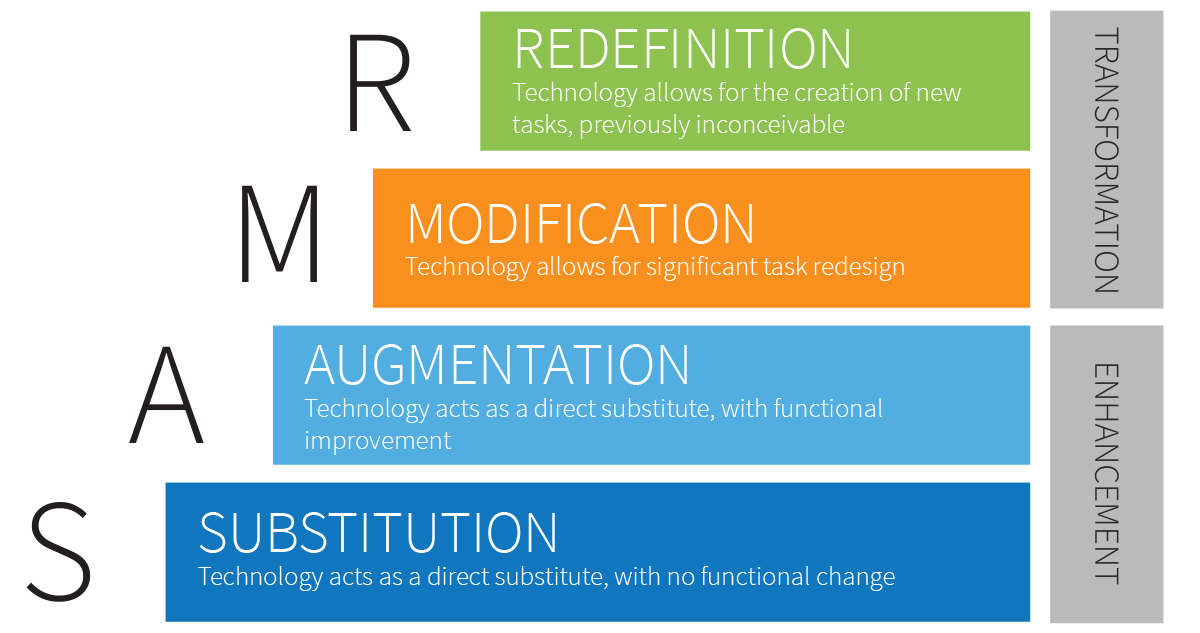|
As Geoffrey Rockwell states in digital humanities “One of the features of multimedia is the interactivity or the programming that structures the viewer’s experience. Some level of interactivity is assumed in any computer-based work, but by this definition interactivity becomes a defining feature that helps weave the multiplicity into a whole. Interactivity is thus important to the artistic integrity of multimedia.” (Rockwell & MacTavish)
Clark and Lyons observe that “Learning takes place when the new content stored in the visual and phonetic components of working memory are integrated” (Clark, R.C & Lyons, C 2010) and Mayer compliments this by acknowledging “Integrating refers to building appropriate connections between the verbal and pictorial representations in working memory as well as relevant prior knowledge activated from long-term memory.” To complement the integration, video, examples, questions and answers should be synchronized using the same format and colour scheme of text and imagery. Mixed modalities of presentation provide cognitive enhancement of like presentations to compliment the integration. References: Richard E. Mayer. “Applying the Science of Learning: Evidence-Based Principles for the Design of Multimedia Instruction” American Psychologist, November 2008, pp. 760-769. Clark, R.C & Lyons, C. (2010). Three views of instructional visuals, In Graphics for Learning: Proven Guidelines for Planning, Designing and Evaluating Visuals in Training Materials. San Francisco: Pfeiffer, 15-28. http://site.ebrary.com.ezproxy.tru.ca/lib/trulibrary/reader.action?docID=10469757&ppg=37 Geoffrey Rockwell and Andrew Mactavish https://web.archive.org/web/20180817192144/http://www.digitalhumanities.org/companion/view?docId=blackwell/9781405103213/9781405103213.xml&doc.view=print&chunk.id=ss1-2-10&toc.depth=1&toc.id=0 Ohler, J. (2009). Orchestrating the media collage. Educational Leadership, 66(6), 8-13. http://www.ascd.org/publications/educational-leadership/mar09/vol66/num06/Orchestrating-the-Media-Collage.aspx Assessment in schools has always been a delicate area because assessments have so many facets to them. These include 1) what is being assessed, 2) who is being assessed, 3) who will read the assessment and 4) what are the consequences of the assessment.
As Patti Shank points out, “There are two levels of objectives, and each level is ideally assessed using a different type of assessment. Declarative objectives ask learners to remember or recall facts and concepts. … (&) Procedural objectives ask learners to apply what they know in realistic or real situations.” Online assessment need to ensure they can determine the students ability in procedural objectives.
These ‘essential intellectual abilities’ are falling through the cracks in conventional classrooms. In an online environment, the opportunities for students to explore nuanced competencies has been greatly improved and assessment must ensure that it reflects these changes and opportunities. References: Wiggins, Grant (1990). The case for authentic assessment. Practical Assessment, Research & Evaluation, 2(2). Retrieved on November 20, 2018 from http://PAREonline.net/getvn.asp?v=2&n=2 Faculty Focus | Higher Ed Teaching & Learning. (2009). Assessing Online Learning: Strategies, Challenges and Opportunities. Retrieved on November 20, 2018 from https://www.facultyfocus.com/free-reports/assessing-online-learning-strategies-challenges-and-opportunities/. The most important considerations in developing an online teaching environment is what the student is intended to learn and how they are going to learn it. Different theories rely on a different learning models so it is important to ensure that the learning is applicable to the outcome. Although many of these theories cross boundaries with one another, distributed learning environments must be built with the intended learning in mind.
“Janicki and Liegle (2001) analyzed different instructional design models to identify the components that support quality design of web-based instruction. They identify components from each of the behaviorist, cognitivist, and constructivist schools of learning” (Ally, M. 2008). Each of these components must be thoroughly explored in an attempt to recognize how the student will respond to the specific theory being applied. For each different theory, there are limitations and designers must be aware of the milestones that need to be met from the learner under each circumstance. For behaviorist models of delivery “Learners must be provided with feedback so that they can monitor how they are doing and take corrective action if required.” For the cognitive model “Learners should be told why they should take the lesson, so that they can attend to the information throughout the lesson.” And with the constructivist model “Learning should be interactive to promote higher-level learning and social presence, and to help develop personal meaning” These are just three examples cited by Mohamd Ally in chapter one of 'Foundations of Educational Theory for Online Learning'. It stands to reason that the difference here is judging delivery against how the student is responding when essentially on-line distributed learning is defined by the lack of physical presence of a teacher. The most difficult hurdle for any theory of distributed learning to overcome is the difference between the individual's learning pattern. It is difficult to present to, for example, the multiple intelligences, or to gauge how difficult a student finds the process if the results are all on line.These issues are easier to recognize and adapt to in a face to face learning environment. However, as recognized by Marie Sontag, “Education theory must change to accommodate new developments in the way students learn and access information” (Sontag M 2009) References: Ally, M. (2008). Foundations of Educational Theory for Online Learning.In, Anderson, T., (ed) The Theory and Practice of Online Learning (2nd ed.) Cavanaugh, C., Barbour, M. & Clark, T. (2009). Research and Practice in K-12 Online Learning: A review of Open Access Literature. The International Review of Research in Open and Distance Learning [Online] 10:1. Access from: http://www.irrodl.org/index.php/irrodl/article/view/607/1182 Sontag, M. (2009). A Learning Theory for 21st Century Students. Innovate 5 (4). Access from: http://dawnjarbeau.wikispaces.com/file/view/A+Learning+Theory+for+21st-Century+Students.pdf I hated school. I couldn’t do it. I couldn’t do it on so many levels. I wasn’t very good at reading and writing, I wasn’t very good at math, I wasn’t even very good at socialising. I was terrible at PE and I was terrible at science. I hated secondary school where I remained not very good at everything and now I am a teacher.
I have subsequently been part of schools where they bedazzle parents with a huge variety of big words, like ‘decontextualize’, and ‘inquiry’ and ‘cognitive disequilibrium spatial context proximity synergising’. All aimed to give the parents a pretentious confidence in the school’s ability to deliver a cutting-edge education for their kids, towards the cutting-edge world they face, to avoid children being bored or not liking school. This variety of pedagogical descriptors has not been translated into the same variety of classroom practices. Elementary schools have not had the paradigm shift out of the Victorian age, where, as Sir Ken Robinson puts it… “we still educated children by batches, we put them through the system by age group… why do we have this assumption that the most important thing kids have in common is how old they are?”1 We know we need to deliver differently, but it is difficult to make that change. The development and growth of online communication and gaming has greatly impacted the way we organise, communicate and connect as a society. Children are accessing internet enabled devices at very young ages. “…there’s a lot of evidence parents are passing back their smartphones to kids as young as age one. iPads and iPhones have become digital toys for young kids.”2 Online, distributive and virtual education has grown significantly in the post high school environment and has been ‘recognised’ as a useful tool for pre-graduating students that are encouraged into online collaboration. On-line learning has not been taken up so distinctly in elementary schools. This is due to the importance hinged on social and emotional aspects of the developing child and their need for face to face tuition with peers and adults. “”We don’t have research on the consequences for social-emotional skills,” says Deborah Stipek, an education professor at Stanford University. “School settings where children can interact and learn to cooperate with peers may be important for developing social skills, at least for some children. We need to know not only if it works, but how it works, when it works, and for whom.”3 Blended Learning has emerged with a significant role to play within the elementary classroom, in fact it will be a game changing role. Implementation of robust blended education in elementary schools will necessitate changes in teacher roles, student roles, timetabling and the entire curriculum delivery of discreet subjects. “Blended learning is an education program … that combines online digital media with traditional classroom methods. It requires the physical presence of both teacher and student, with some elements of student control over time, place, path, or pace.”4 This will give students the best of both worlds. One where they are face to face with peers and teachers, and another where they control the pace and direction of their own learning. Whilst working face to face students learn social skills, how to interact and how to recognize the nuances of facial expression and tone of voice. How sharing and collaboration work in real time with real objects and a direct comparison between themselves and their peers. Working on-line develops a sense of responsibility and ownership. It helps promote a range of digital literacy skills and enhances on-line collaboration skills. “What makes blended learning particularly effective is its ability to facilitate a community of inquiry. Community provides the stabilizing, cohesive influence that balances the open communication and limitless access to information on the Internet. … Blended learning has the capabilities to facilitate these conditions and adds an important reflective element with multiple forms of communication to meet specific learning requirements.”5 Bringing an online component into a real-life activity combines skills for an authentic learning experience. However, Blended learning is a multifaceted construct described by Badrul Khan’s Octagonal Framework. Khan recognises the many ‘dimensions’ that encompass Blended Learning. “The original use of the phrase “blended learning” was often associated with simply linking traditional classroom training to e-learning activities, such as asynchronous work (typically accessed by learners outside the class at their own time and pace). However, the term has evolved to encompass a much richer set of learning strategies or “dimensions.”6 Young elementary students play, build, make and move and inherent in all these activities are inquiry, decontextualizing, analyzing, imagining, sequencing, extrapolating etc. Elementary school learning should not be solely by ‘date of manufacture’1 unless necessary. E.g. physical health education warrants a same age approach more than another discreet subject will. Ability based learning has its advantages but also its disadvantages where students associate themselves with the grade they are given and no longer find it necessary to improve or try. The BC Curriculum now endorses and encourages curricular that encompasses the core competencies of communication, creative and critical thinking, personal and cultural identity, and social and personal responsibility. Blended Learning opens up opportunities for a different kind of elementary school by embracing these core competencies. A project based approach to learning where students work individually or in groups on a long-term undertaking such as creating a practical invention, testing a scientific hypothesis or making an animated movie. The classroom becomes a Maker Lab, or Science laboratory, or an engineering garage, or a Robotics workshop, or a film studio. These creative activities are supported and overseen by a physical teacher using physical resources. The necessary learning of academic content runs in parallel but is delivered through an asynchronous online delivery. This makes the students learning entirely self-paced and unrestricted. By relating the academic work closely to the project, the academic work becomes more authentic to the student and relate closer to real world skills and achievement. By encouraging an online collaborative approach to academic output, students benefit from a larger learning community and experience skills in digital literacy. This Blended approach will also allow the use of technology to be considered and purposeful. There is no need to approach online learning as a must, just because it exists, and we mustn’t make the move to a completely online environment for young children. “It is already perfectly apparent that the way we construct knowledge is even now too embedded in past perceptions of knowledge, schooling and learning. It is worth considering how educational thinking moves within a separate agenda, which is not focused on technology. Technology is but part of a number of changes in society that demand reflection.”7 There is much argument and discussion currently centred around the accessibility of education to students of a range of needs abilities and skills. The responses to these are largely in the form of adaptation and accommodations for children in Grades 4 to 7 to fit a system that is not necessarily fit for purpose in delivering a modern curriculum. Key infrastructure decisions need to be made to allow students to access and build on the strengths. We need to act on the words we use; access, differentiation, personalised, and perhaps even Cognitive Disequilibrium Spatial Context Proximity Synergising!!! “A key goal in modernizing the education system is to provide students with an education that is still rigorous, but also flexible and innovative, one from which they gain the knowledge, skills, and abilities they need to succeed in today’s modern world.”8 References"
I am in agreement with Brennan when he states, “I’m ideologically promiscuous. I go with what works!” (Brennan 2013). Often, I have found what works does not come from pedagogical theory or lectures of educational philosophy, but practice and experience. A.K.A. trying and failing. (Felts 2018) And during this ‘trying and failing’, you pick up a sense of what works for some kids and how to differentiate this for others until it turns into something else that works for some other kids and then, and only then, does it relate to a learning theory that someone else has already thought about, implemented and mastered!
However, after reading through these theories (not all of them of course) there is a sense of me that sees, to a more or less degree, they all work for different individuals, purposes, and circumstances. Who am I to disagree with any of these theories? To this end I relate to Jerome Bruner’s Constructivist Theory that learning is “an active process in which learners construct new ideas or concepts by transforming information, constructing hypothesis and making decisions.” (Bruner 1990) Functional Context theory as presented by Tom Sticht. Although research suggests this is on the job literacy training for deeper penetration into the workplace, the curriculum we deliver to elementary school children needs to be relevant. When students are not engaged fully in their learning because they say it is boring and irrelevant, in my experience, they are usually correct. And thirdly I noted that Howard Gardner’s Multiple Intelligence’s was also on the list. I do relate to this as it steadfastly states that we all learn differently and I feel he has categorized these differences (or intelligence’s) in a meaningful and effective manner that is not too specific. Central to his theory in my experience is that individual possess these intelligences in “varying degrees” which is highly important when creating differentiated lessons of relevance to a class. As a foot note, I’ve always wondered if anyone really knows how to swim before they actually get into the pool? References: http://www.instructionaldesign.org/theories/index.html http://hybridpedagogy.org/in-connectivism-no-one-can-hear-you-scream-a-guide-to-understanding-the-mooc-novice/ http://www.instructionaldesign.org/theories/constructivist/ http://www.instructionaldesign.org/theories/multiple-intelligences/ Northern Illinois University, Faculty Development and Instructional Design Center [email protected], www.niu.edu/facdev, 815.753.0595 https://www.niu.edu/facdev/_pdf/guide/learning/howard_gardner_theory_multiple_intelligences.pdf Both Brennan and Downes argue eloquently in stating their view on MOOC’s and by extension connectivism. Ironically, Brennan’s article begins with the premise that there is “no one size fits all”, and then both Downes and Brennan continue their arguments based on a single learning characteristic depending on the focus of the debate. This means they are both correct! And isn’t that the point of educational systems?
Brennan and Downes both agree that self-motivation and self-efficacy is important to learning, and that the learner must want to learn. However, Brennan states there is no support for learning in the connectivism model where teachers “help shape that script. We set tasks that are challenging, and achievable, and we create environments that allow achievement to happen” to enable motivation through self-efficacy. Downes argues that whilst recognising it’s a smaller role, there is always a motivation reasoning set out by the teacher. “Very rarely does a teacher simply set out a task that the student can simply choose to do or not do. When teachers set tasks, there is almost invariably an element of coercion involved”. Dowes main thrust of argument is that MOOC have the same innate issues that face to face teaching experiences, but they are viewed through different lenses. Brennan argues that in an MOOC... To learn in a cMOOC you need to connect. To connect in a cMOOC you need to learn. to which Dowes counters with... To learn in traditional education you need to be able to read. To be able to read in traditional education you need to learn. Both Brennan and Dowes make equal weighted points that lead us back to the fact that learning styles are individual and again, some learners are better suited to delivery of certain content in different ways. Classrooms are shrinking and becoming more personalized. Differentiation, UDL and accommodations are growing to allow a larger range of individuals and individual learning styles to succeed in learning. MOOC’s will find it difficult to measure how deep the learning goes as efficiently as a face to face teacher. Learning is not as simple as the acquisition of knowledge, but how the context of that knowledge is explored and exploited in thr future. The difference is observed in the film "Good Will Huning". Whilst Sean (Robins Williams) explains to Will (Matt Damen) that whilst he knows everything there is to know about everything, he has never experienced anything, and consequently can not make a deeper life connection to his knowledge.1 References: 1 Damon M. Affleck B. Good Will Hunting, Park Scene Brennan, K. (2013). In Connectivism, No One Can Hear You Scream: A guide to understanding the MOOC novice. Hybrid Pedagogy. 24 July 2013. Downes, S. (2013). Connectivism and the Primal Scream. Half an Hour. 25 July 2013. |
AuthorPaul Felts Archives
August 2019
Categories |



 RSS Feed
RSS Feed